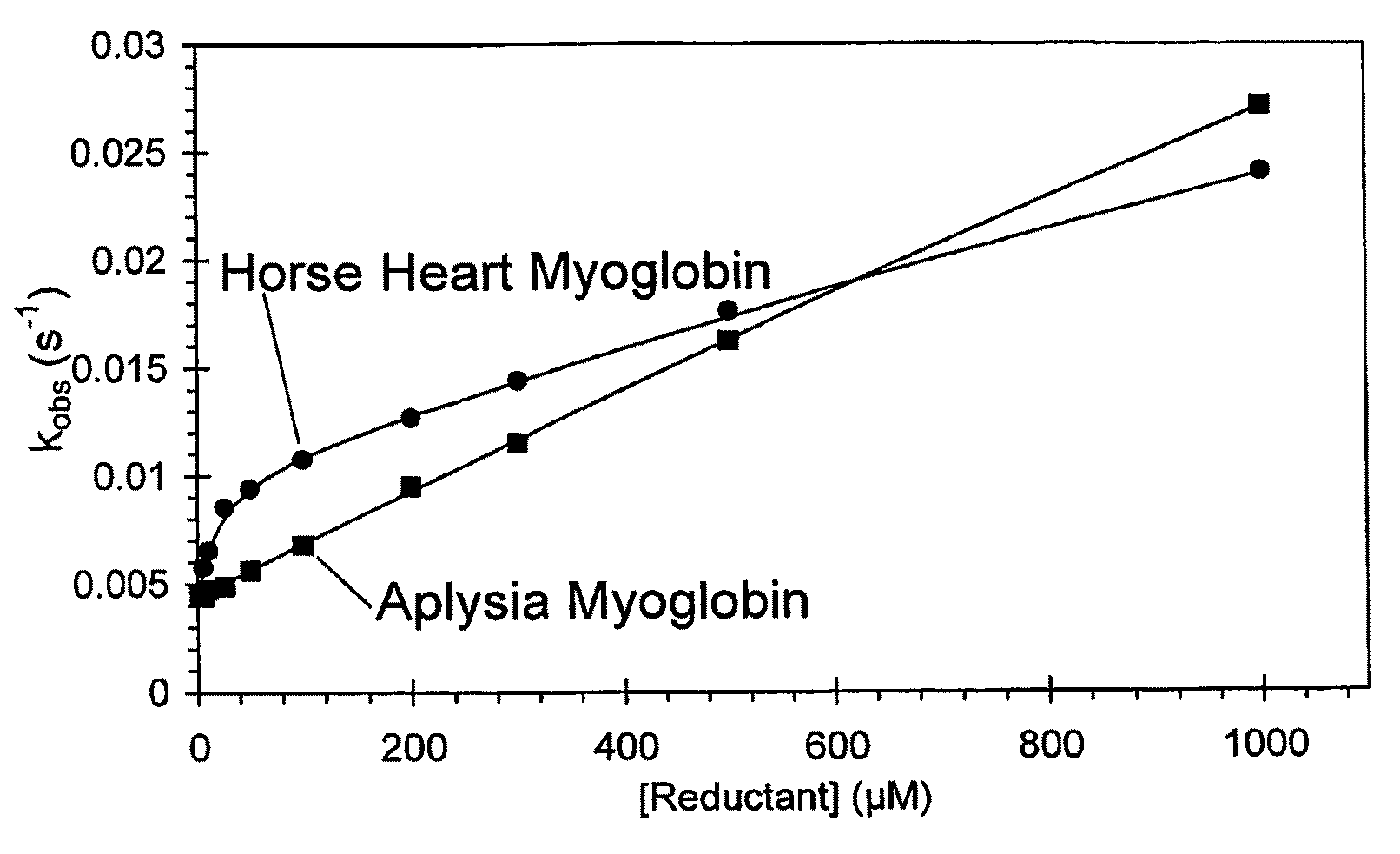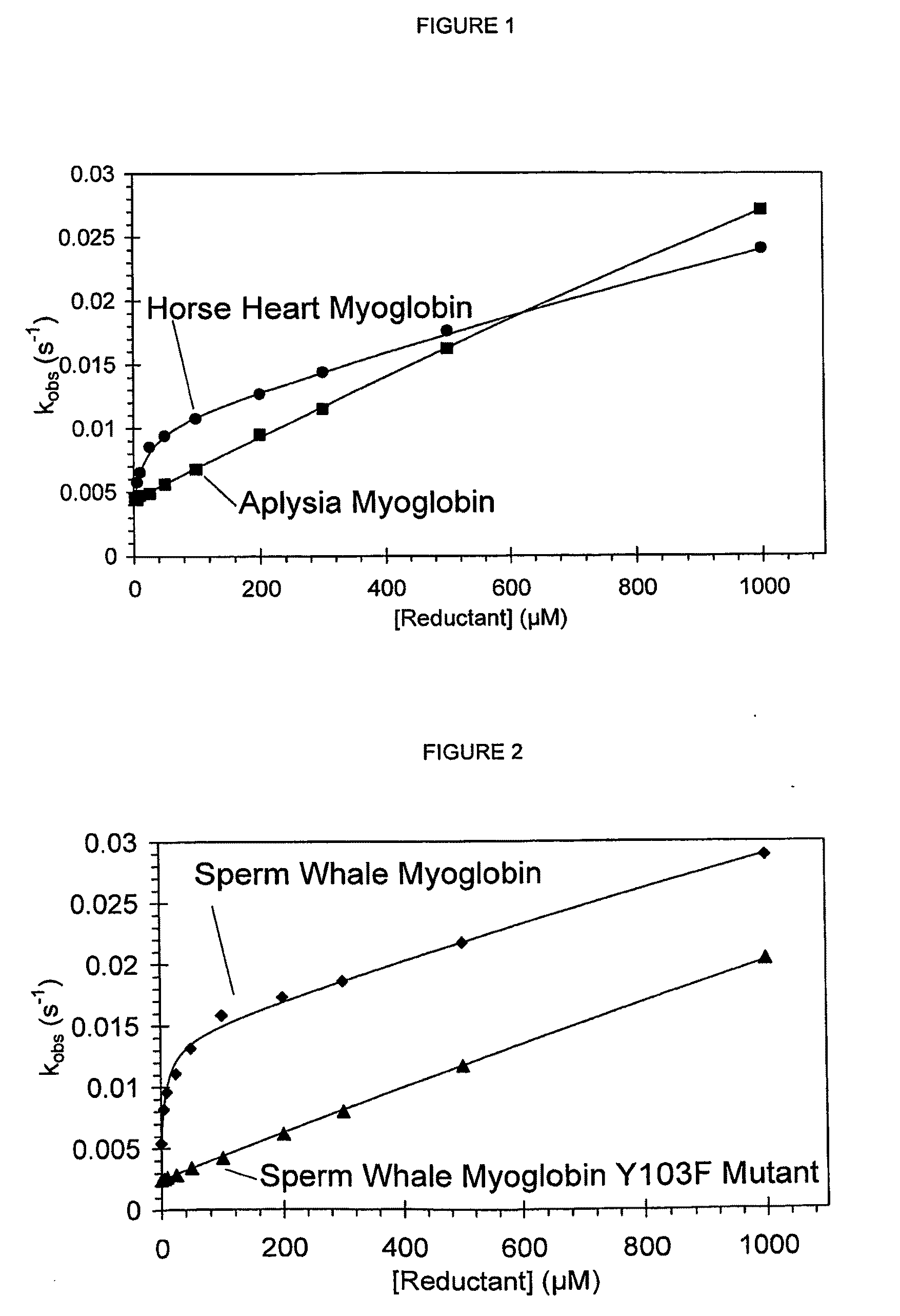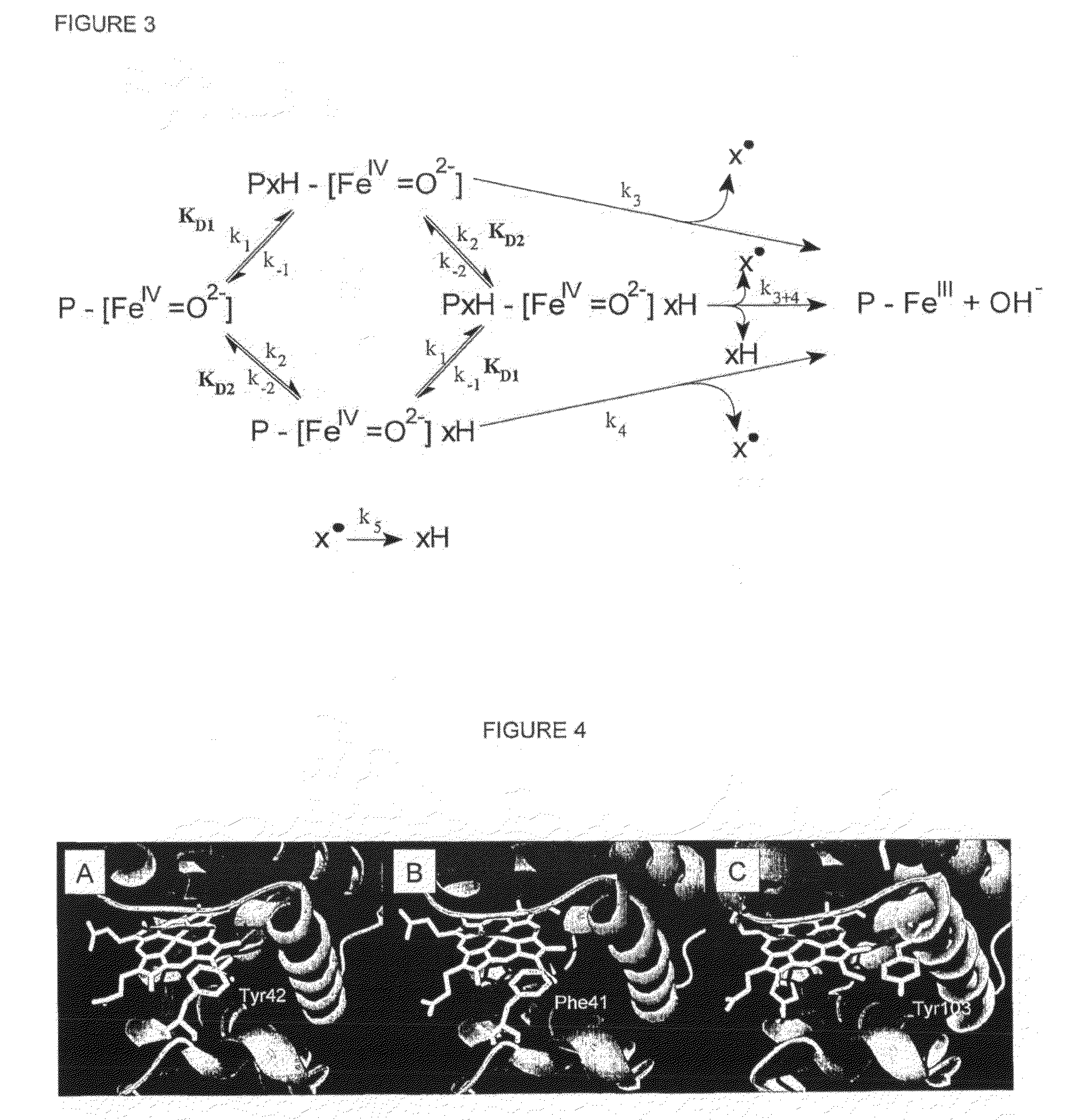Modified globin proteins with altered electron transport pathway
- Summary
- Abstract
- Description
- Claims
- Application Information
AI Technical Summary
Benefits of technology
Problems solved by technology
Method used
Image
Examples
example 1
[0096]Myoglobin from Horse, but not Aplysia, possesses a high affinity through-protein electron transfer pathway as measured by ferryl reduction kinetics
[0097]In this example the kinetics of the reduction of ferryl haem from myoglobin from different species to ferric haem protein were examined kinetically to determine the presence or absence of a high affinity-through protein pathway. Following the procedure, ferric horse myoglobin from Sigma-Aldrich (Poole, Dorset, UK, further purified by gel filtration), or recombinant ferric Aplysia myoglobin Mb (20 μM) in 5 mM sodium phosphate pH 7.4 was reacted with H2O2 (20 μM) at 25° C. for 15 min. At this time conversion of ferric myoglobin to ferryl myoglobin was greater than 95% as measured by addition of sodium sulfide (1 mM). Catalase (10 nM) was added to remove unreacted H2O2 and was left to react for a further 1 min. At the pH used the ferryl haem protein is stable for several hours. Reductant was then added in 0.1M sodium phosphate pH...
example 2
[0100]A tyrosine residue close to the haem is key to the high affinity through-protein electron transfer pathway.
[0101]Wild-type and recombinant sperm whale myoglobin and recombinant Tyr103>Phe sperm whale myoglobin were reacted with peroxide and the kinetics of ferryl haem reduction by deferiprone determined as described in example 1. The through-protein electron transfer pathway, evident in wild type sperm whale myoglobin, is not observed in the Tyr103>Phe mutant (FIG. 2). This demonstrates that the presence of a redox active tyrosine, interfacing the haem and the external environment, is a key component for the high affinity pathway.
[0102]The data from FIGS. 1 and 2 can be rationalised by a two site model where a reductant (xH) binds to two possible sites on myoglobin in its ferryl oxidation state (P—[Fe(IV)=O2−]2+, where P denotes protein, FIG. 3) with affinities KD1 and KD2. Only from these two sites can electron transfer from the reductant to the ferryl iron take place. The hi...
example 3
[0103]The heterogeneous subunits of human haemoglobin exhibit different mechanisms of ferryl reduction.
[0104]Recombinant human haemoglobin was reacted with peroxide and the kinetics of ferryl haem reduction by ascorbate determined as described in example 1. The time course of ferryl haem reduction is not single exponential, as observed with myoglobin, but can be described using a double exponential function that generates two rate constants, one representing the observed rate constant for ferryl reduction of the alpha subunit and one representing the observed rate constant for ferryl reduction of the beta subunit. The kinetics of ferryl reduction (FIG. 5) shows that the subunits behave very differently towards reductants with only one of the haemoglobin subunits, assigned to the alpha subunit, exhibiting a high affinity electron transfer pathway.
PUM
| Property | Measurement | Unit |
|---|---|---|
| Composition | aaaaa | aaaaa |
| Affinity | aaaaa | aaaaa |
Abstract
Description
Claims
Application Information
 Login to View More
Login to View More - R&D
- Intellectual Property
- Life Sciences
- Materials
- Tech Scout
- Unparalleled Data Quality
- Higher Quality Content
- 60% Fewer Hallucinations
Browse by: Latest US Patents, China's latest patents, Technical Efficacy Thesaurus, Application Domain, Technology Topic, Popular Technical Reports.
© 2025 PatSnap. All rights reserved.Legal|Privacy policy|Modern Slavery Act Transparency Statement|Sitemap|About US| Contact US: help@patsnap.com



